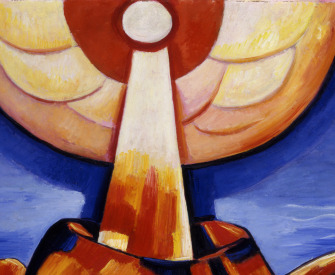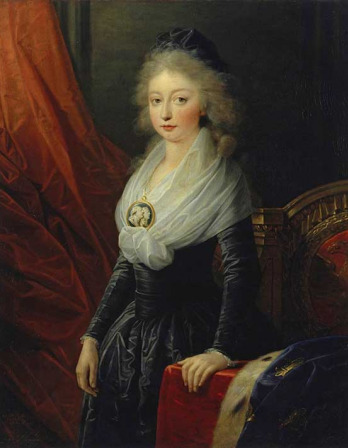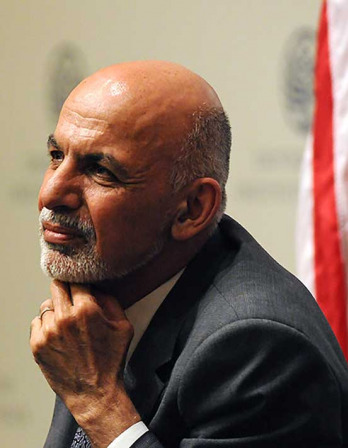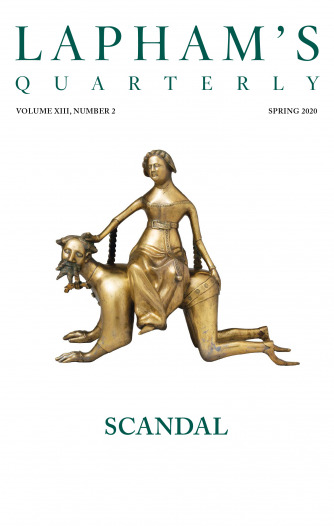Nothing is more unpredictable than the mob, nothing more obscure than public opinion, nothing more deceptive than the whole political system.
—Marcus Tullius Cicero, 63 BCNo Smoke for Camilo
Can one be a Christian and a revolutionary? Consider the case of Camilo Torres Restrepo, and the meaning of liberation theology.
By Garret Keizer
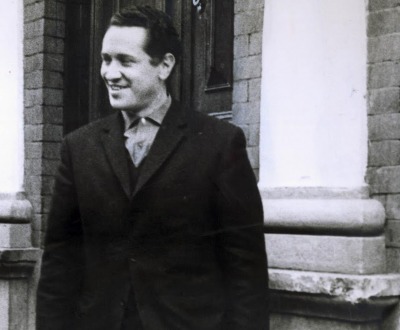
Camilo Torres Restrepo, c. 1960. Wikimedia Commons.
His Death
Nineteen hundred and sixty-six years after the birth of Jesus Christ and one year prior to the execution of Che Guevara, a thirty-seven-year-old Colombian Catholic priest and sociologist named Camilo Torres Restrepo was killed while taking part in a botched ambush of government troops. He had joined a band of guerrillas only a few months before. “I have taken off my cassock,” he said, “to be a truer priest.”
Born into an upper-class secular family—his mother was furious about his decision to be ordained—Torres served as a college chaplain, a parish priest, and a founding leader of the opposition United Front before conflict with his ecclesiastical superiors and a growing conviction that, in his country at least, “the Catholic who is not a revolutionary is living in mortal sin” led him to apply for release from his priesthood. Shortly after laicization was granted, he left for the jungle.
Though branded a communist, Torres denied that he was. “I am not nor will I ever be a communist,” he said, adding that he was willing to make common cause with any progressive party committed to the overthrow of a system in which twenty-four wealthy families effectively ruled the nation. He also conceded that “in economic planning, Marxists have held the first place.”
Or at least they had. The platform Torres put forward for the United Front was generally acknowledged to be more radical than any that had previously appeared. “Free enterprise will be abolished.” “No institution will be exempt from paying taxes.” “The owner of any room, which, in the judgment of the urban reform office, is not being sufficiently used, will be fined. Income derived from such fines will be invested by the state in its housing program.” Among proscribed “social crimes” he listed “usury, monopoly, speculation,” and “the flight of capital.” His family policy for this predominantly Catholic country consisted of just two provisions: legal punishment for “parents who abandon their children” and “effective sanctions” against domestic abuse.
In spite of his extreme positions, Torres seems to have been a popular figure, even among the social elite. Tall, dark, and handsome, not without machismo, he made for good newspaper copy. As a clerical gadfly, he might have enjoyed a long and distinguished life. As a future Latin American pontiff—who knows?—his cartoon image might eventually have appeared making snow angels on the cover of The New Yorker.
Instead we see his cruciform torso, bruised and stripped to the waist, lying dead on a dirty tiled floor. Trotsky, Guevara, Malcolm X—perhaps it is nothing more than the alchemy of beards and blood, a canny photographer’s trick, but they all look like Christ at the end.
Tributes were not slow in coming. “He has become a symbol of the revolutionary unity of the people of Latin America,” proclaimed Fidel Castro, possibly breathing a sigh of relief that neither Torres nor Guevara was currently based on Cuban soil.
Closer to home, responses were mixed. Taking care to refer to his former colleague as Mr. Torres, one prelate suggested that family problems and “a certain degree of mental unbalance…led to his downfall.” Then Colombian president, Guillermo León Valencia Muñoz, was more blunt: “Camilo Torres preferred to die killing people, rather than live at the service of his fellow citizens.”
His Context
In the revolutionary martyrology of the twentieth-century Latin American Church, Torres is often listed as “one of the first”—so early that he is more accurately viewed as a precursor of the “liberation theology” movement than as someone it moved. By the time advisers to President Reagan were making the case that “American foreign policy must begin to counterattack (and not just react against) liberation theology,” Torres had been dead for nearly fifteen years.
The advisers’ use of the singular is overly simplistic; there was never a single liberation theology, but rather a constellation of theologies, having as common denominators the project of giving justice to the poor and, to quote the Brazilian theologian Leonardo Boff, a reversal of the priorities in which “orthodoxy, that is, correct thinking about Christ, occupied primacy over orthopraxis, correct acting in the light of Christ.”
Other salient features included an increased emphasis on the Bible, read as an unfolding narrative of material as well as spiritual liberation; a Marxist critique of existing socio-economic structures; and an insistence that the churches of the southern hemisphere needed to chart their own theological course. In Boff’s words, “Our sky possesses different stars.”
Essential to this quest was the recognition that the Church, not least of all in Latin America, had often served the interests of power. For telling symbolism, it would be hard to top the 1942 coronation of Nicaraguan dictator Anastasio Somoza García’s daughter as “Queen of the Army” with a crown borrowed from a statue of the Virgin Mary. But the more “profound blasphemy” identified by El Salvador’s Archbishop Óscar Romero was for the Church to “forget and to ignore the basic levels of life, the life that begins with bread, a roof, a job.” Romero never took up arms as Torres did, but was gunned down in 1980 while celebrating Mass.
Liberation theologians drew from a variety of influences: the reforms of Vatican II, the pedagogy of “conscientization” developed by Paulo Freire, which sought to “demythologize” the existing social order, and the wave of anticolonialist rebellions that marked the century. But their deepest roots were to be found in an ancient yearning for the kingdom of God, “on earth as it is in heaven.” The Magnificat uttered by Mary in the Gospel of Luke, a favorite hymn of the Liberation Church, has the mother of Jesus praising a God who overthrows:
He has cast down the mighty from their
thrones,
and has lifted up the lowly.
He has filled the hungry with good things,
and the rich he has sent away empty.
The pivotal events of the Hebrew Bible and the New Testament, the Exodus and the Resurrection, respectively, are both acts of upheaval. In spite of pharaohs and caesars, they overturn the common anthropological role of religion as sanctifier of the status quo. The historian Arend van Leeuwen speaks of Christianity as a “virus” that brings revolution—and revolutionary expectation—into history.
Seen in that light, it is not surprising to read that when news of the French Revolution first reached Germany, “Devout Protestants in Württemberg who were waiting for the coming of the kingdom of God sent an emissary to Paris to find out for certain what was happening.” (He never returned.) Banging around London prior to 1917, Lenin and Trotsky attended a meeting at a “Social Democratic church,” where they were moved as well as scandalized when the assembly rose to sing “Lord Almighty, let there be no more kings or rich men!” The theme was as old as the Magnificat.
Not all liberation theologians advocated violence in casting down the mighty from their seats, though many were willing to consider it as a legitimate option. In this they were hardly more radical than Pope Paul VI, who in his 1967 encyclical Populorum Progressio, said that “revolutionary uprising” might be justified in cases of “manifest, long-standing tyranny.” Many felt that the prevailing Latin American situation met the standard.
For those who did, Camilo Torres was an obvious hero. Revolutionary brigades in Argentina and Guatemala bore his name. When the Nicaraguan priest Ernesto Cardenal (perhaps best known for the finger-wagging rebuke he received from Pope John Paul II when he knelt to kiss the pontiff’s ring) joined the Sandinista guerrillas, he cited Camilo Torres as his model. Other figures on the left, like Dom Hélder Câmara, insisted that nonviolent resistance was the proper course, though Câmara also declared that “the memory of Camilo Torres and Che Guevara merits as much respect as that of Martin Luther King.”
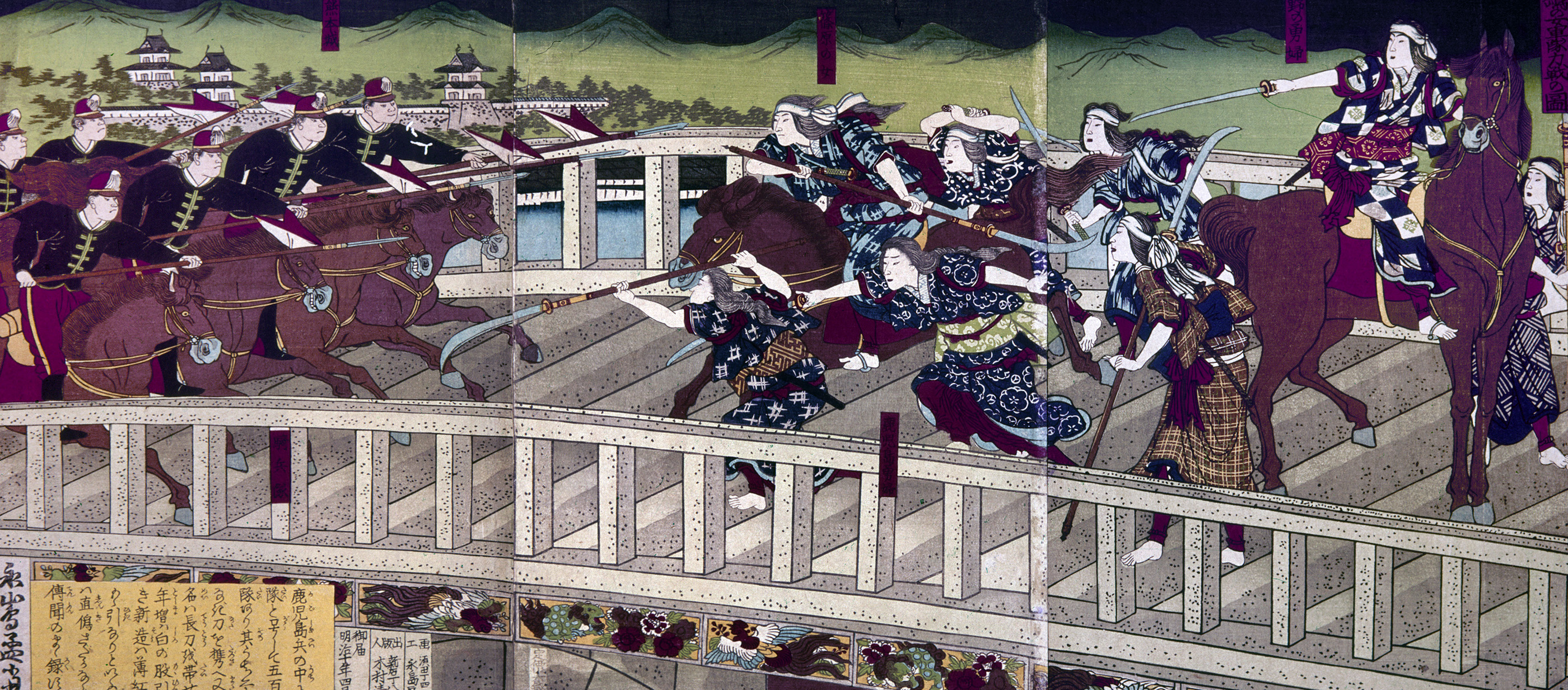
Women from Kyushu fighting against government cavalry during the Satsuma Rebellion of 1877, by Nagayama Umosai. Saigo Takamori led the revolt against the Meiji emperor; ten years prior he had helped to restore the imperial system. The Granger Collection.
Such an accolade seems faraway, in geography and, increasingly, in time. “The high moment of liberation theology has passed,” wrote Cornel West, not without sympathy, as long ago as 1988. Alistair Kee’s book-length postmortem published two years later bears the title Marx and the Failure of Liberation Theology (a failure to be “Marxist enough,” according to the author). In addition to strong opposition from the Vatican and the CIA, the Liberation Church surely took a hit from the discrediting of Marxism that followed the collapse of the Soviet Union, a demotion for which Karl Marx himself may be partly to blame. In his blinkered insistence on the “scientific” basis of socialism, he gave poetic justice to our equally blinkered conclusion that “socialism doesn’t work,” spoken as if the aspirations of the First International were reducible to the terms of a nine-year-old’s chemistry set. Liberation theology’s insistence on the prophetic basis of a more just society might open our eyes to a longer view.
At the least it might help us to see what the theologian Karl Barth referred to as the “almost unequivocally demonic” nature of capitalism, its preternatural ability to disarm opponents and mesmerize victims with ever more ephemeral forms of supply and demand. At the close of the twentieth century, workers in thirteen of Latin America’s eighteen countries were earning lower wages than they had in 1980, yet “expectations for consumption” had risen. In the midst of entrenched poverty and deplorable living conditions, 86 percent of Brazil’s urban households and 89 percent of Venezuela’s had color TVs.
Lest these statistics seem either dated or tainted by colonialist condescension, we should add that around the start of the new millennium, 23 percent of the U.S. population was living in or near poverty, with 16 million children “food insecure” and 32 million adults unable to read—but not to worry, because 91 percent of the adults had cell phones. So keen Marx was to bust divinity that he failed to seize the dope. Retail, not religion, is the opiate of the people. Then again, Marx did not live long enough to see the likes of Walmart or Camilo Torres.
His Violence
I find it strange that those who ask whether it is even possible to be both a violent revolutionary and a Christian seldom broach the equally knotty and infinitely more relevant question of whether it is possible to be a Christian and a member of the North American bourgeoisie. Dante put usurers in hell; we have all but taken them out of the dictionary. They were excused from the catechism long ago.
Still, the issue of violence remains critical. That Torres himself must have thought so is implied by his request to be relieved of his priesthood prior to joining the guerrillas. Composing an introduction to his writings shortly after his death, the Catholic pacifist Dorothy Day, who once decried the “confusion we have gotten into when Christian prelates sprinkle holy water on scrap metal to be used for obliteration bombing,” is clearly uncomfortable. Midway through the text she breaks down and confesses, “I must say that this introduction which I was asked to write is a hard assignment.” I know what she means.
Jesus’ statements against violence and forceful resistance are well known. “Put up your sword,” he tells his disciple Peter when the latter tries to prevent his arrest, “for those who live by the sword will die by the sword.” This leaves the question of why Peter was carrying a sword in the first place. Perhaps because Jesus asked him to. In the Gospel of Luke, he tells his disciples prior to the final showdown in Jerusalem, “Let the one who has no sword sell his cloak and buy one.” Many commentators consider the imperative metaphorical and Peter apparently too thick to understand it.
Others, including the first-century historian Josephus, have suggested that Jesus was actually a Zealot, a militant Jewish nationalist committed to driving the occupying Romans from Palestine. He seems to have had at least one disciple with a Zealot background and possibly as many as four. His rout of the money changers in the Temple is hardly a pacific act. The evidence and the argument attached to it—that the nonviolent Jesus was created by New Testament evangelists in order to offer potential Roman converts a less threatening messiah—are as fascinating as they are ultimately useless. If Jesus was truly a Zealot, a position dear to those hoping to justify violent revolution in his name, the fact undoes the justification in one neat stroke. Theocratic nationalism is a far cry from revolutionary socialism; a first-century precursor of the Taliban doth not a Zapatista make.

Heliocentric armillary sphere, early nineteenth century, Italy. Erich Lessing, Art Resource.
In any case, the assumption of the earliest Christians was that nonviolence was obligatory. At least until the late second century, no Christian could become a soldier after having been baptized; in some instances, converted soldiers were denied baptism until they had done penance for the blood shed in their previous work. Writing in the early third century, Tertullian insisted that Christ, “in disarming Peter, unbelted every soldier,” a conviction echoed by his great contemporary Origen. “We Christians no longer take up sword against nation, nor do we learn to make war anymore, having become children of peace, for the sake of Jesus who is our leader.” As late as the early fourth century, Lactantius forbade the “just man” not only “to serve as a soldier” but also “to accuse anyone of a capital offense, because it makes no difference whether you kill with a sword or with a word.”
Such militant pacifism ended, except for the ordained and the cloistered, with Constantine’s legalization of Christianity in 313 and the subsequent transformation of the faith from outlaw cult to state religion. With barbarians literally at the gates, Saint Augustine began to formulate the just-war doctrine that would be given further refinement by Aquinas. In stipulating the conditions under which Christians might bear arms, the just-war doctrine gave exclusive approval to violence waged by “lawful authority,” as opposed to violence provoked by authoritarian repression. Martin Luther merely affirmed his medieval antecedents when he wrote, “The hand which bears such a sword [the sword of government] is as such no longer man’s hand but God’s; and not man it is, but God, who hangs, breaks on the wheel, beheads, strangles, and wages war.”
The fate of the German peasants who rose to rebellion in 1524, inspired in part by Martin Luther’s writings only to be condemned by Luther himself, is pretty well summarized by the verbs of the preceding quotation. Leonhard Ragaz, an early twentieth-century Protestant theologian on “the extreme left” of Swiss socialism (the assessment is Trotsky’s), said that in calling for the brutal suppression of the Peasants’ War, Luther “bound the cause of Christ so closely to the cause of princes and rulers that it now seems almost impossible to break the union.”
Even so, Ragaz saw violence as incompatible with the Christian faith and with socialism as well: “The opposite of democracy and socialism is violence. Capitalism is the exploitation of people by people, and this is possible only through force…If capitalism unites itself with force, it is in keeping with its nature, but if socialism does it, it is a defection from itself.”
In his analysis, if not in his conclusion, Ragaz anticipates a central theme of liberation theologians: that in Christianity’s selective condemnation of violence, and even in its purer forms of pacifism, the religion has failed to give due attention to the “systemic violence” of economic injustice. At the time Torres took up the gun, more than 60 percent of Colombia’s agricultural land belonged to less than 4 percent of its land-owning people. Every year roughly 25,000 Colombian children died of malnutrition. I find it hard to imagine a pacifist so principled as to rule out the use of a gun to obtain food for his own starving child, but for the remaining 24,999 we are always ready to turn the other cheek.
The main object of a revolution is the liberation of man, not the interpretation and application of some transcendental ideology.
—Jean Genet, 1983If it seems I want to justify Torres’ decision to take up arms, I do not. To do so risks moderating not only his radicalism but that of Christianity itself, which at its anarchic best aims for nothing less than the subversion of all worldly power, a rejection of the means as well as the ends of “the rulers of this age.” It is “preeminently the religion of slaves,” as Simone Weil once observed, and perhaps only a slave can desire a revolution so extreme.
As for Torres, Dorothy Day may be closer to him in her ambivalence than many others in their praise; she will not dishonor the priest turned guerrilla by giving him the theological equivalent of a shower and a shave. The medieval mystic Meister Eckhart said that he’d rather go to hell with Jesus than to heaven without him. For Torres I can imagine no better epitaph. Deadly, defrocked, and eaten alive, he writes from the jungle to his dear friend Guitemie, hoping she will eventually be able to join him in the armed struggle and assuring her that “Le Maitre is still with us.”
His Love
A lawyer comes to Jesus and asks him which is the greatest commandment in the Law. Jesus replies that the greatest commandment is, “Love the Lord your God with all your heart, soul, mind, and strength” and that the second is similar: “Love your neighbor as yourself.” In one of the gospel accounts, the lawyer goes on to ask, “Who is my neighbor?”
It could be said that most of theology and much of political philosophy hang on the lawyer’s second question. By this I do not mean that either pursuit is greatly preoccupied by an attempt to discern the neighbor, but rather that both can amount to the lawyer’s dodge of substituting a line of discourse for a course of action. Who is my neighbor? Let’s have a symposium. Let’s talk it to death.
It is this dodge that Torres would no longer abide. If, as Saul Alinsky once said, a liberal is someone who leaves the room when an argument is about to turn into a fight, Torres left the room before the fight could be reduced to an argument.
Thus his impatience with “the ideological colonialism of our left. Slogans and clichés are taken over. A special revolutionary jargon is used…Public manifestations are held in sympathy with the oppressed of the world, while ignoring the oppressed at home…While the all-powerful minority ruling class unites to defend its interests, the leaders of the left attack one another, causing dismay within the popular class.”
If Torres’ characterization of the Colombian left at midtwentieth century does not ring any bells for a North American in the twenty-first, perhaps his characterization of the Colombian ruling class will: “The oligarchy neither wants to, nor is it able to, open new sources of work. It does not want to because it thinks of itself more than of the country. It prefers to send its money to Canada or Switzerland rather than to invest it in Colombia.”
The only thing lacking by way of an update is the oligarchy’s usurpation of technology to ensure that labor is not so much exploited as expendable. Marx says that social relations grow out of modes of material production—but what becomes of social relations when what we produce is nothing, when droid-published copies of Das Kapital are delivered by drones to readers who are themselves, in the apiarian sense, at least, drones?
But you see what I am doing. I am dodging love with a question.
When I was in my late twenties, having just discovered Camilo Torres by way of a passing reference in Gustavo Gutiérrez’s seminal book, A Theology of Liberation, I went to an activist priest and asked, not unlike the lawyer in the Gospels, how a person went about “getting involved” in the struggle to bring about the kingdom of God. The priest had marched on Washington with Dr. King and was rumored to have run guns for the Black Panthers, and I figured he ought to know. My question seemed to annoy him.
“It doesn’t work like that,” he told me. “You don’t ‘try to engage.’ You give yourself to a community, you love the people, and your politics grow out of that love.” In other words, the romantic attraction of figures like Camilo Torres and Che Guevara, no less than the tactical abstractions of Alinsky’s liberal and Jesus’ lawyer, run counter to the revolutionary impulse. Yes, “the true revolutionary is guided by strong feelings of love,” as Che Guevara said, but this is not sentimental. Writing on the love enjoined in the New Testament, Torres says, “For this love to be true it must seek to be efficacious.”
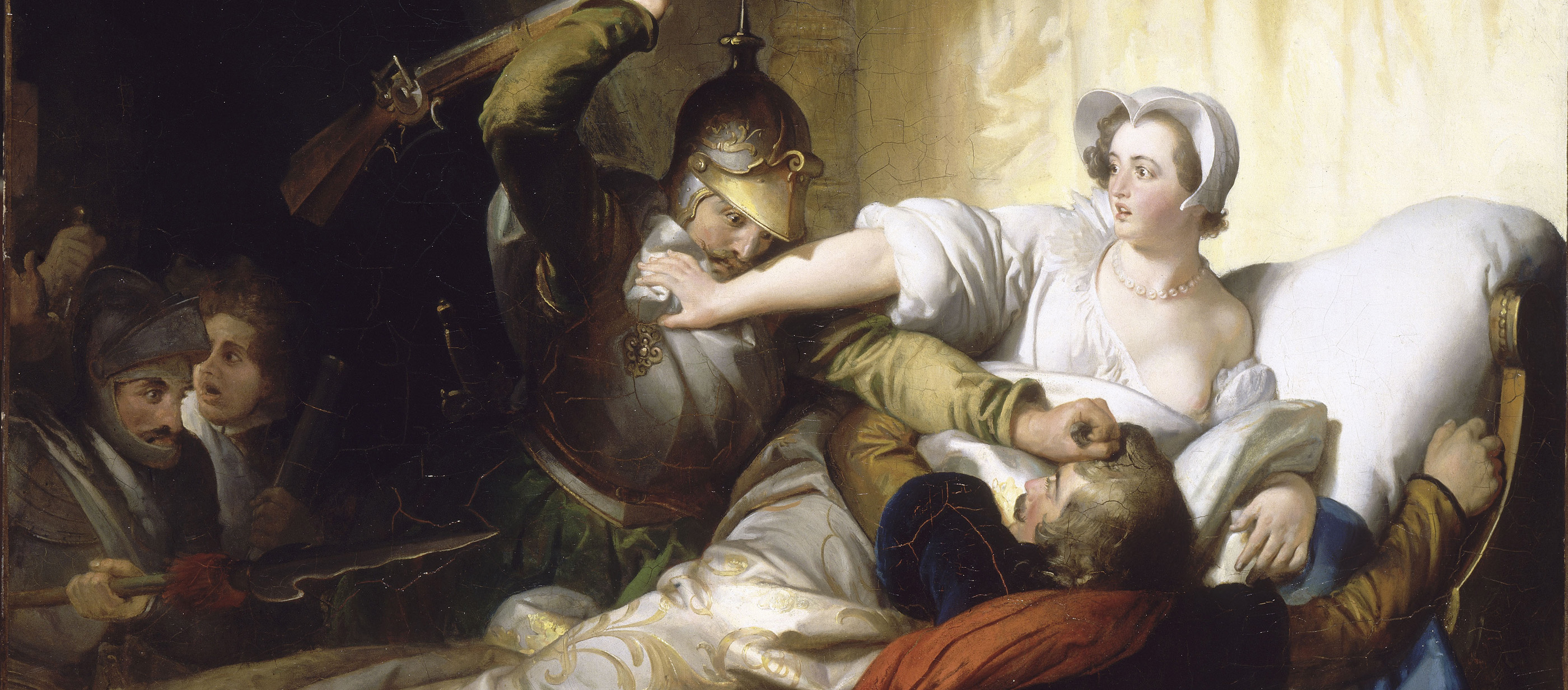
Scene of the Massacre of St. Bartholomew, by Alexandre-Évariste Fragonard, 1836. Margaret of Valois, the future queen of France, attempting to protect her husband, Henry of Navarre, during the French Wars of Religion. Louvre, Paris, France.
Therefore: “I believe that the revolutionary struggle is a Christian struggle, and a priestly one. Indeed, in the present specific conditions of Colombia, participation in that struggle is the only way men can show love for their neighbors as they should…I am giving up one of the privileges I hold most dear (the celebration of the Church’s ritual) in order to create conditions which will give to that ritual a more authentic meaning. If I make this sacrifice I do so in the belief that my commitment to my fellow countrymen obliges me to it. The ultimate criterion on human decisions is love, supernatural love; I am prepared to run all the risks that that love may ask of me.”
Torres was permitted to say one last Mass before his laicization became official. It took place at the earliest Sunday service at a church within walking distance of his own. Many of those in attendance were poor young women, housemaids who came to early Mass in order to return in time to make breakfast for their masters. It’s possible that his last act as a priest—and effectively his first act as a guerrilla—was to bless a huddle of housemaids before they scurried home to heat the kettles. One imagines a point where the two offices meet, at the airy intersection sketched above the bowed heads in their coarse mantillas, the crosshairs that are also the cross.
His Pipe
We find a special poignancy in “personal effects,” in the residue of objects that survive a dedicated life, Gandhi’s spectacles and spinning wheel, Jesus’ coat without seam. Eulogizing a partisan killed in the Spanish Civil War, Peruvian poet César Vallejo says his remains included “a body big enough to hold/the soul of the world” and, in one of his pockets, a humble spoon. “Inform all the comrades at once!/Let them bow before this spoon forever.”
Camilo Torres is reported to have taken three possessions with him when he left to join the guerrillas: a small pocket Bible, a black pullover sweater of which he was especially fond, and his pipe. A newspaper cartoon from his days as an activist priest shows him rocketing out the church door on a motor scooter, dialing a telephone, a pipe clenched in his teeth. Torres said he hoped to celebrate Mass again in a postrevolutionary Colombia, but in the meantime he was hanging on to his pipe.
“A customary and extremely important comfort in the life of the guerrilla fighter is a smoke,” Che Guevara says in his manual Guerrilla Warfare, “whether cigars, cigarettes, or pipe tobacco; a smoke in moments of rest is a great friend to the solitary soldier.” Guevara was a pipe smoker, as is Zapatista leader Subcommander Marcos, often shown with a pipe jutting through the mouth hole of his signature ski mask. “Pipes are useful,” Guevara notes, “because they permit using to the extreme all tobacco that remains in the butts of cigars and cigarettes at times of scarcity.”
But in times of danger—useless, of no comfort at all. Hunkered down for days prior to the fateful ambush, Torres and his fellow guerrillas were forbidden to strike a match. A pipe-smoking comrade and he are reported to have passed signs back and forth to express their unfulfilled longing.
“To the stoicism imposed by the difficult conditions of warfare should be added an austerity born of rigid self-control that will prevent a single excess, a single slip, whatever the circumstances” (Guevara again). “The guerrilla soldier should be an ascetic”—perhaps the penultimate condition of those “guided by strong feelings of love.”
And so, no smoke for you, Camilo, in your cramped foxhole beside the trail. No white plume rising from a Vatican roof. Love will not allow it. No chalice in your hands, either, raised high above the victorious masses, as you had hoped. Like Le Maitre, you must wait.
“Truly I tell you, I will never again drink of the fruit of the vine until the day when I drink it new in the kingdom of God.”

